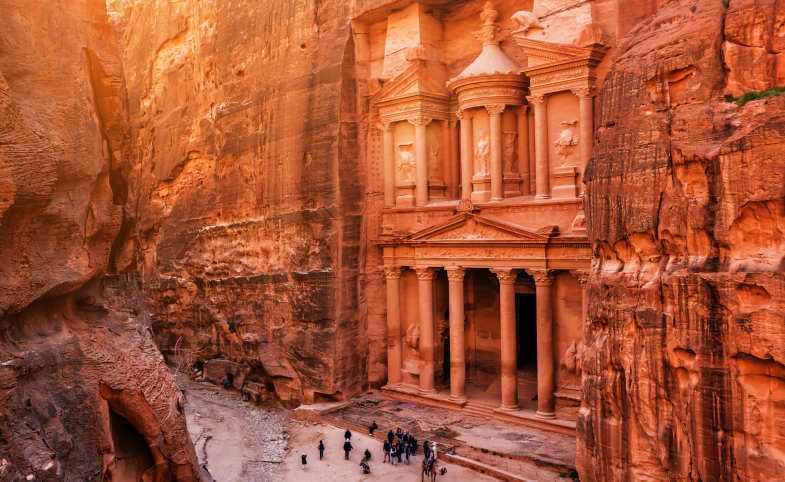This article is the first in a three-part series by Zenia Duell on the fourth World Conference on Creative Economy (WCCE), held in Tashkent, Uzbekistan. Everything was running two hours late at the fourth World...
KEEP READINGThe CPD Blog is intended to stimulate dialog among scholars and practitioners from around the world in the public diplomacy sphere. The opinions represented here are the authors' own and do not necessarily reflect CPD's views. For blogger guidelines, click here.

Heritage Diplomacy: An Interview with Irina Bokova
This article is the second in a three-part series by Zenia Duell on the fourth World Conference on Creative Economy (WCCE), held in Tashkent, Uzbekistan. The first part explored international conferences as a tool for public diplomacy.
A country’s heritage, especially when it takes the form of a tangible structure, is often used as a reference point or shortcut to encapsulate a country’s identity. But shifting the emphasis from "my heritage’ to "our heritage," can be a powerful tool in cultural diplomacy.
This, said Irina Bokova, is an important aspect of using heritage as a tool for building strong diplomatic relationships across cultures and countries.
“When ISIS was destroying the heritage in Syria, Iraq, Mali…I tried to convey the message that heritage matters for peace," said Bokova, who previously served as Director-General of UNESCO. "Heritage is everything that we are. It’s not just bricks and stones…it is a part of us. Otherwise, we would just be human beings without memory.”
I interviewed Bokova at the fourth World Conference on Creative Economy (WCCE), held in Tashkent, Uzbekistan, where she chaired a panel on how arts and culture can shape diplomacy. During the panel discussion, her Royal Highness Princess Dana Firas, President of the Board of the Petra National Trust, highlighted the iconic Treasury at Petra (pictured above) as an example of shared heritage as cultural diplomacy. While the breathtaking red sandstone tomb has come to be representative of Jordan, it in fact shows a mix of architectural styles, including ancient Nabatean, Greek and Roman influences.
"Heritage is everything that we are. It’s not just bricks and stones…it is a part of us. Otherwise, we would just be human beings without memory." (Irina Bokova)
Bokova highlighted the loan of the Bayeaux tapestry as a “perfect example” of using heritage for cultural diplomacy. In early 2018, as Brexit negotiations were intensifying, French President Emmanual Macron offered to loan the 11th century tapestry, which depicted the Norman conquest of England, as a gesture of goodwill, during a state visit by the British Prime Minister Theresa May. The 950-year-old artifact had never before left France, and ultimately the fragility of the tapestry rendered its relocation impossible, but the statement was interpreted as a symbol of the long-standing connection and unity between England and France, a pictorial and political representation of their shared history.
Intangible heritage, too, can be an important aspect of cultural diplomacy. Bokova offered the example of Mali, which was one of the first signatories of UNESCO's Convention for the Safeguarding of the Intangible Cultural Heritage. She emphasised the Malian democratic constitution – an oral tradition centered around dispute resolution and the selection of community leaders. In Uzbekistan, where our conversation took place, the intangible heritage of the mahalla takes a central role in President Shavkat Mirziyoyev’s Development Strategy of New Uzbekistan. The mahalla is a traditional community, often centered around a mosque, which has its own organizational system to select leaders, foster traditional crafts, and arrange support for vulnerable members of the community. The Centre for Contemporary Art (CCA) in Uzbekistan has also launched several new art residencies, based in traditional Tashkent mahallas and located in mosques and madrasas (schools) restored by the Aga Khan foundation. This initiative is another perfect example of cultural diplomacy, inviting contemporary artists from around the world to understand, appreciate, and be inspired by traditional Uzbek heritage.
“Creativity is freedom,” concluded Bokova. “There is nothing more humane, or human, than to create. Arts and culture play an important role in our lives…it forms us, without us noticing it. And when we become conscious of it, it can be used to “open doors to improve [diplomatic] relations."
Visit CPD's Online Library
Explore CPD's vast online database featuring the latest books, articles, speeches and information on international organizations dedicated to public diplomacy.
POPULAR ARTICLES
-
November 3
-
November 5
-
November 13
-
November 25
-
December 17
Join the Conversation
Interested in contributing to the CPD Blog? We welcome your posts. Read our guidelines and find out how you can submit blogs and photo essays >.













